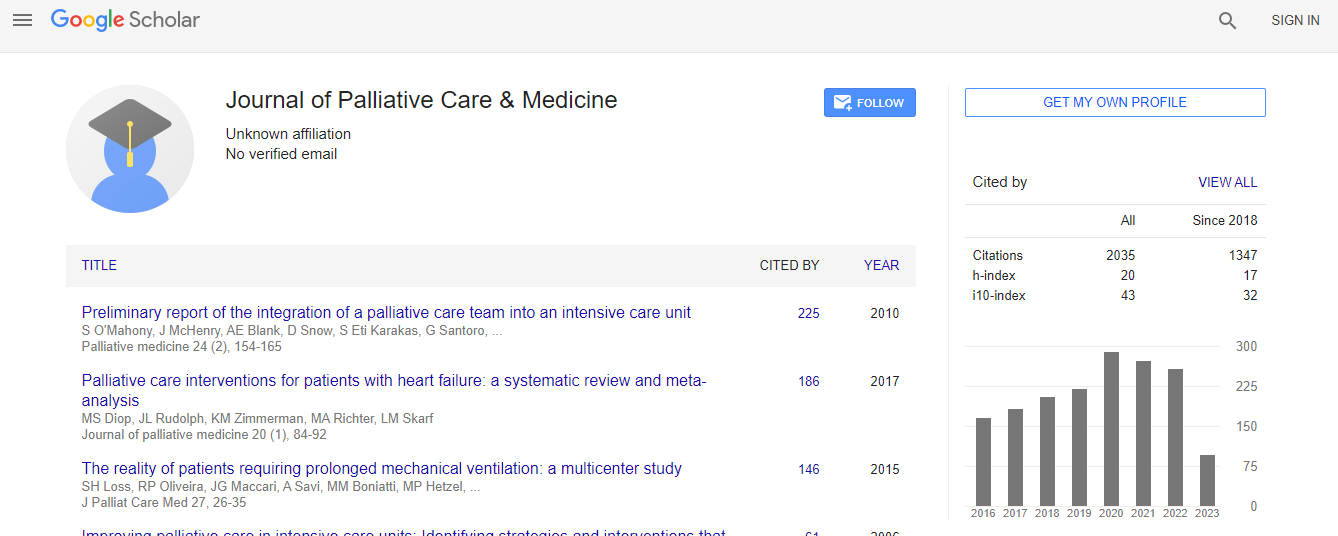Our Group organises 3000+ Global Conferenceseries Events every year across USA, Europe & Asia with support from 1000 more scientific Societies and Publishes 700+ Open Access Journals which contains over 50000 eminent personalities, reputed scientists as editorial board members.
Open Access Journals gaining more Readers and Citations
700 Journals and 15,000,000 Readers Each Journal is getting 25,000+ Readers
Google Scholar citation report
Citations : 1689
Journal of Palliative Care & Medicine received 1689 citations as per Google Scholar report
Journal of Palliative Care & Medicine peer review process verified at publons
Indexed In
- Index Copernicus
- Google Scholar
- Open J Gate
- Genamics JournalSeek
- China National Knowledge Infrastructure (CNKI)
- Electronic Journals Library
- RefSeek
- Hamdard University
- EBSCO A-Z
- OCLC- WorldCat
- Virtual Library of Biology (vifabio)
- Publons
- Geneva Foundation for Medical Education and Research
- Euro Pub
- ICMJE
Useful Links
Recommended Journals
Related Subjects
Share This Page
SYSTEMATIC ASSESSMENT AND PATIENT'S DRUG PRESCRIPTION FOLLOW-UP IN LONGTERM CARE
2nd Global Congress on Hospice & Palliative Care
S. Medjahed, D. De-Falvelly
Adelaide Hautval Hospital, France
Posters & Accepted Abstracts: J Palliat Care Med
Abstract
To optimize resident's drug prescription in long term care, we conducted a retrospective analysis of all patient's prescriptions admitted to the department between January 1and June 30 2013. This analysis was to respond, for each drug, to the presence of an indication of prescription, the appropriateness of the dose and the duration of prescription and to the indication to continue the prescription beyond the date of evaluation. This analysis was performed independently by two geriatricians, based on the data contained in the medical records of the patients considered. The justified character of a prescription was defined from the drug authorizations market data (AMM), the French list of drugs potentially inappropriate in the elderly, indications based on evidence and certain clinical ethic principles of geriatric medicine. For the 50 drug orders analysed, this approach allowed an average reduction of three lines of drug prescription per resident. Non-appropriate requirements (indication) rate was 41% of prescriptions; inappropriate times were 16% of prescriptions and non-adapted doses was 23%. Forty three percent of drug treatments had not been continued. This systematic evaluation of drug orders on admission is now sustainable in long-term care. This leads to correct drug prescriptions and fights against poly medication and the avoidable supply in the elderly.Biography
Email: Smahane.medjahed@aphp.fr

 Spanish
Spanish  Chinese
Chinese  Russian
Russian  German
German  French
French  Japanese
Japanese  Portuguese
Portuguese  Hindi
Hindi 
